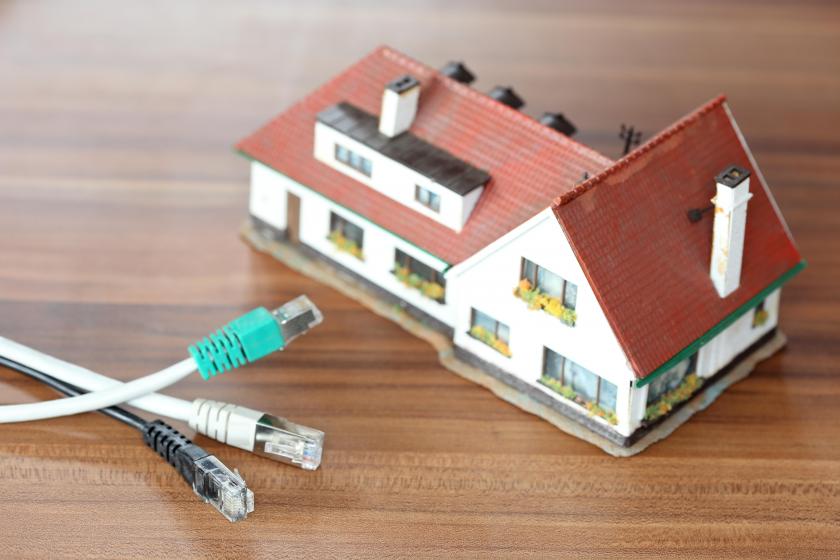Expect a BEAD Broadband Slowdown in 2024Expect a BEAD Broadband Slowdown in 2024
Enterprises are advised to monitor broadband deployment activity at the state level as providers take advantage of funding made available in the Broadband Equity Access and Deployment (BEAD) portion of the nation's Infrastructure and Jobs Act.
January 1, 2024

As the Broadband Equity Access and Deployment (BEAD) portion of the president's historic $1 trillion Infrastructure and Jobs Act continues into 2024, enterprises should expect a slowdown in activity and progress.
First, a non-technical reason. It is a presidential election year during which Congress often becomes the opposite of progress. With the polarized parties campaigning intensely, passing bills beyond a budget to keep the lights on for more than a few months seems farfetched.
Secondly, a timing reason. Remember that only the first installment of the approved funds gets handed out early in the year, with the rest of the $42.5 billion dispersed later in the year.
What is the enterprise impact of BEAD?
“2024 will be the year that the proposals will be reviewed, and states will receive their initial 20% disbursement. So, it is best for enterprises to continue to monitor the progress of each state to understand where in the process they might fall,” explained Jeff Heynen, Vice President of Broadband Access and Home Networks for Dell’Oro Group, a market research and analysis firm. "Ultimately, I think the entire process is going to go a lot slower because of the election, continued disagreements on maps, pole attachments, etc. I see the whole BEAD process extending through 2030."
Enabling BEAD: Streamlining the pole attachment process
The FCC began efforts in mid-December to simplify, streamline, and speed up the long and arduous pole attachment process to help BEAD broadband rollouts.
These new rules will allow for faster resolution of pole attachment disputes and provide pole attachers with more detailed information about the poles they plan to use as part of their broadband buildouts. The new rules will speed up the pole attachment dispute resolution process by establishing a new intra-agency rapid response team and providing the team with specific criteria to apply when considering complaints. The Commission’s rules also will increase transparency for new broadband buildouts by allowing attachers to obtain pole inspection reports from utilities. In addition to the new rules, the Commission proposes to set defined timelines for large pole attachment applications.
In 2024, we may witness more networks transitioning underground as part of hardening efforts. While this may be more costly, it is a strategic move to enhance network resilience and minimize damage from environmental factors like storms, wildfires, and other natural disasters.
Across the nation, telephone poles are in rough shapes in many areas. They have broken over time, with utilities keeping the part in the ground and attaching newer pieces to complete the everyday structure.
More money for Middle Mile Networks
The NTIA has already awarded the $1 billion from Biden's bill to upgrade and expand this crucial infrastructure that ties access networks to a variety of backbone networks. These networks also often connect radio towers, data centers, and carrier-neutral exchange facilities. Many say additional funding will be required to achieve goals, but passing a spending bill in an election year seems nearly impossible – especially after Congress punted the national spending bill to February and failed to pass foreign aid bills in 2023.
“Subsidization of middle mile networks is intended to expand their reach into more communities so that they can deliver premium broadband services to both residential and business customers,” explained Dell’ Oro’s Heynen. “Without those networks, communities are on an island. So, they are critical infrastructure that deserves as much attention as the last mile networks themselves.”
Continued staff shortages
2023 saw a continuing discussion of the shortage of skilled staff needed to deploy the infrastructure needed to deliver broadband access to unserved and underserved areas. Last year, the Fiber Broadband Association and the AT&T-Corning duo, among others, continued addressing this large challenge with promising results.
According to the government's calculations, 150,000 telecom jobs will be created by BEAD, while research by the FBA estimates the industry will need over 205,000 new jobs in the next five years. In October, the FBA and Wireless Infrastructure Association (WIA) teamed to cross-promote each other's workforce training undertakings.
“The Fiber Broadband Association is aggressively pursuing the goal to bring our fiber-optic training to community colleges veterans and training institutions in all 56 U.S. states and territories," explained Gary Bolton, president and CEO of the FBA. "However, it is partnerships with accomplished organizations like the Wireless Infrastructure Association (WIA) that enable our industries to truly advance mutual initiatives to enable every community to experience the benefits of high-speed connectivity."
He stressed that achieving the BEAD goal requires much more than money. “We cannot do that without a larger technical workforce to build the networks. This partnership with WIA will help close that workforce gap.”
The road ahead for BEAD
National undertakings always face challenges, and BEAD is no exception. Monitoring developments at the state level should keep enterprises abreast of developments in 2024.
Related articles:
Read more about:
Remote connectivityAbout the Author
You May Also Like




